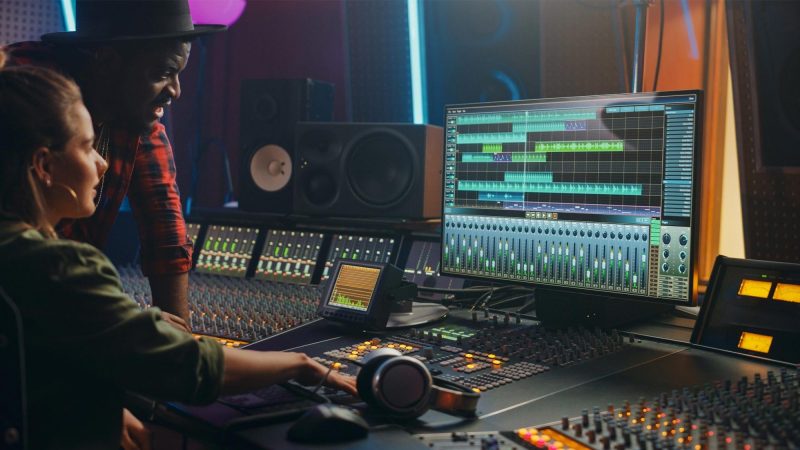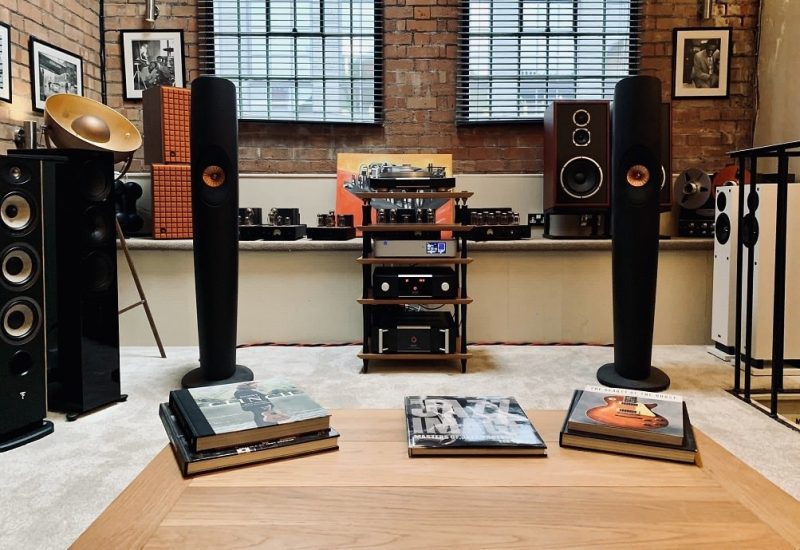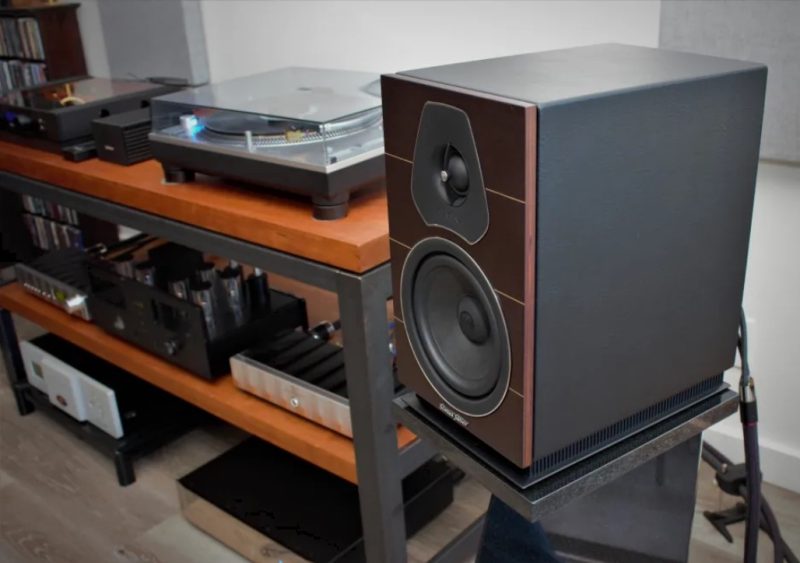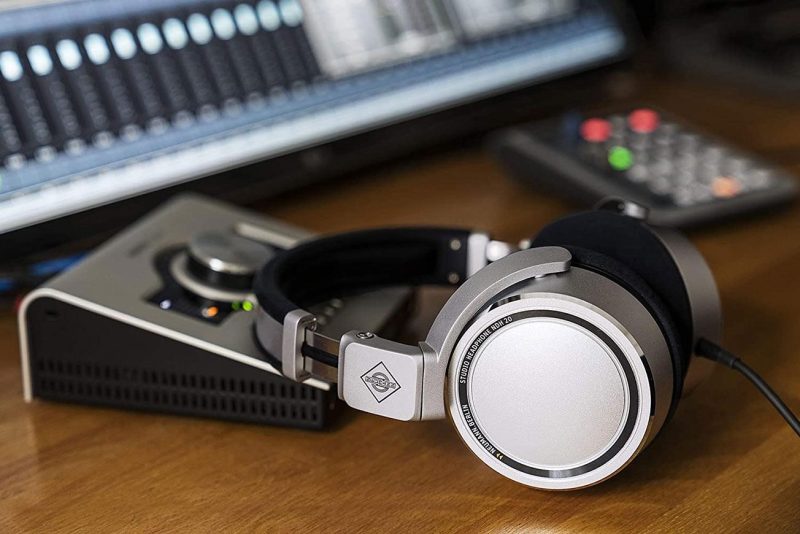Want to crank up some tunes in your home studio? Feeling eager to finally get started on that passion project you’ve been dreaming about for years? Whether you’re a music producer, musician, or just a casual listener, there’s no doubt that having a great-sounding audio setup is essential to enjoying your music to the fullest.
With that said, putting together a quality home studio can be a daunting task, especially since there are a lot of great contenders out there. Some of them are designed for professional use, while others are geared towards more casual consumers. So without further ado, let’s take a look at all of the key pieces you should look for when you go to a well-equipped HiFi store in search of the perfect music goodies.

What Do You Need to Set Up a Professional Studio?
It’s worth noting that not everyone needs or wants a full-blown professional studio. If you’re just looking for a great way to enjoy your music at home, then a more modest setup will probably suffice. However, if you’re serious about music production, then you’ll need to make sure you have everything you need to get the job done right.
AV Processors
At the heart of any quality HiFi system is a great AV processor. This is the brain of your operation, responsible for decoding and processing all of the audio signals that come into your devices. It works by converting digital audio signals into analog form, which can then be amplified by your amplifier and sent to your speakers.
By investing in a quality AV processor, you’ll be able to get the most out of your music files, whether they’re MP3s, FLACs, or something else entirely. It’ll also improve the sound quality of streaming services like Spotify and Apple Music, so it’s definitely worth the investment if you’re in it for the long haul.
Amplifiers
The next piece of the puzzle you should look for in a HiFi store is an amplifier. This is what takes the processed audio signals from your AV processor and amplifies them so they can be sent to your speakers. It’s important to choose an amplifier that’s powerful enough to drive your speakers, but not so powerful that it causes distortion.
A vital feature to look for in an amplifier is its power output, which is measured in watts. A good rule of thumb is to choose an amplifier that has a power output of at least twice the wattage of your speakers. So, if you’re looking at a pair of 100-watt speakers, you’ll want an amplifier that can output at least 200 watts.

Hi-Fi Streamers
If you want to stream music from your computer or mobile device, then you’ll need a hi-fi streamer. This nifty little gadget connects to your home network and allows you to play lossless audio files from your desktop or phone to your stereo system.
The kind of streamer you’ll need will depend on the type of home network you have. If you have a wired Ethernet network, then you can choose from a number of different models that connect via USB or HDMI. However, if you have a wireless network, then you’ll need to make sure your device is Wi-Fi compatible.
Turntables
These days, vinyl is making a big comeback, so it’s no surprise that turntables are becoming popular again. They use a spinning platter to play records, and most of them come with a built-in preamp so you can connect them directly to your amplifier.
If you’re serious about audio quality, then you’ll want to make sure you choose a turntable that has a belt drive. This type of drive is quieter and smoother than direct-drive turntables, which can cause unwanted vibration and noise.
Tonearms
In order to play your records, you’ll need a tonearm. This is the part of the turntable that holds the needle, which is why it’s also sometimes called a “needle arm.”
Most turntables come with a tonearm, but if yours doesn’t, then you’ll have to buy one separately. There are two main types of tonearms: linear tracking and pivoting. Linear tracking tonearms are more expensive, but they offer better sound quality. Pivoting tonearms, on the other hand, are more affordable and easier to set up.

Speakers
No stereo system is complete without a great pair of speakers. Gone are the days of bulky models with endless chords and cables that take up half of your living room. Nowadays, there are plenty of sleek wireless stereo speakers that produce rich sounds without all the clutter.
When choosing speakers, it’s important to consider the size of your room and the type of music you like to listen to. If you’re into bass-heavy genres like hip hop or EDM, then you’ll want a pair of speakers that can handle a lot of low-end frequencies. On the other hand, if you prefer classical or jazz, then you’ll want devices that have a more neutral sound.
In terms of the size of your room, you should choose a pair of wireless stereo speakers that can fill it with sound without being too overpowering. The main indicator of a speaker’s power is its wattage. The higher the wattage, the louder the speaker will be.
If you’re looking for something compact, then you might want to consider bookshelf speakers. These are small enough to fit on a shelf or in a cabinet, but they still pack a punch. Placing them on stands can also help to improve the overall sound quality.
If you have a larger room, then floor-standing models might be a better option. These are taller than bookshelf speakers and provide a fuller sound. However, they also carry a heftier price tag, which might put a strain on your budget.
Another option is to go for a wireless speaker system that comes with two or more speakers. This way, you can place them around your room to create a surround sound effect.

Headphones
If you want to enjoy your music without disturbing the people around you, then you’ll need a good pair of headphones. There are two main types: over-ear and on-ear.
Over-ear headphones are the larger of the two, and they tend to be more comfortable because they don’t press directly into your ears. They also provide better sound isolation, which means you won’t be able to hear any outside noise.
On-ear headphones are smaller and more portable, but their noise-cancelling capabilities aren’t as good. This means they’re not the best choice if you’re looking for a pair of headphones to use in a loud environment.

Taylor is a freelance SEO copywriter and blogger. His areas of expertise include technology, pop culture, and marketing.
















